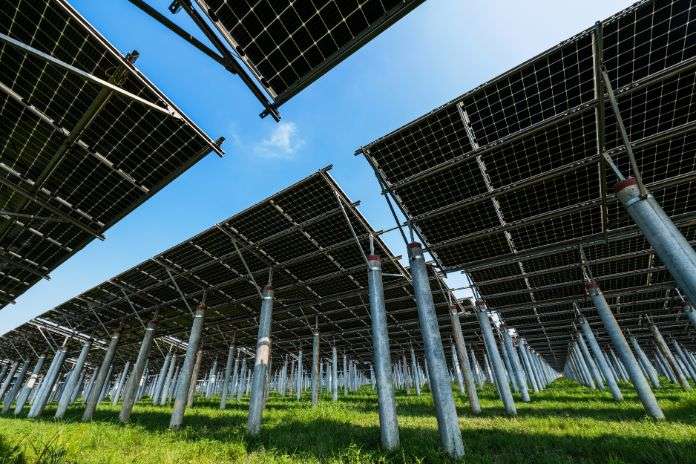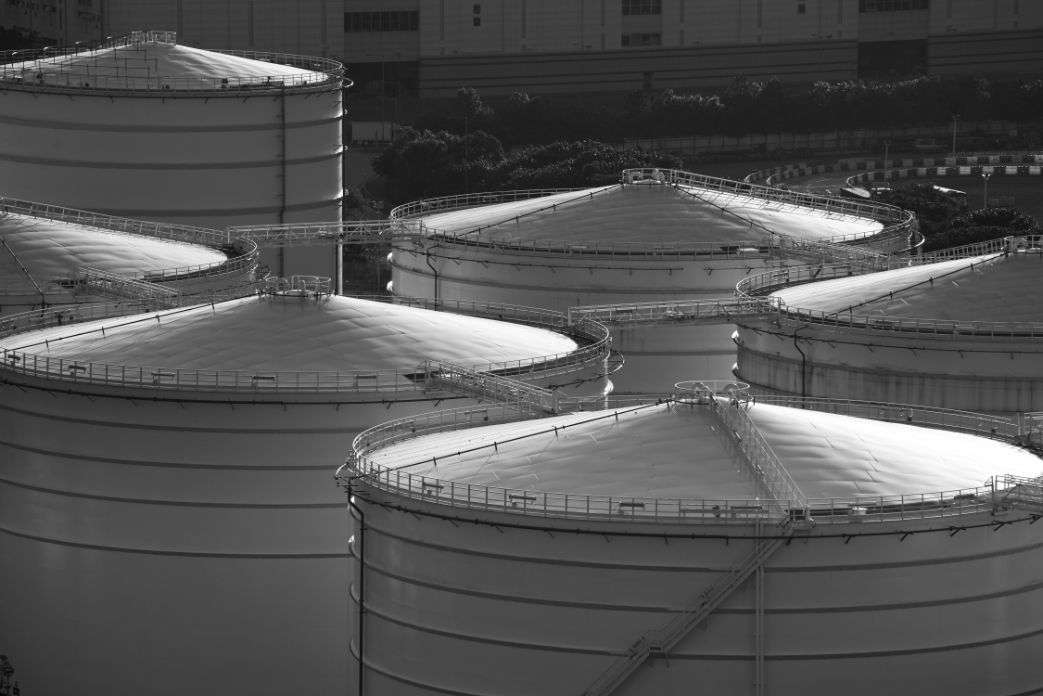In an era defined by environmental consciousness and sustainable energy alternatives, solar power has emerged as a promising source of renewable energy. However, as the sun sets and weather patterns shift, the consistent supply of solar energy becomes a concern. Can solar power be stored? In recent years, significant advancements have been made in solar energy storage technology (batteries), allowing us to store excess solar power for use when the sun isn’t shining. So, yes, solar power can be stored. There are multiple options available for storing solar energy, including deep-cycle batteries, thermal storage systems, and mechanical storage systems. The most common way to store solar energy is by using a deep-cycle battery, which can be used for both residential and commercial purposes. Lithium-ion batteries are the most frequently used and up-and-coming option for solar power storage. This is where the imperative for solar energy storage arises.
- Solar Energy Necessity
- Can Solar Power Be Stored?
- Storage Options
- Deep Cycle Batteries
- Thermal Storage Systems
- Mechanical Storage Systems
- Balancing Supply and Demand
Solar Energy Necessity

Solar power storage refers to the process of capturing and retaining surplus energy generated from solar sources for use at a later time. This vital concept addresses the intermittent nature of solar energy production, which is heavily dependent on factors such as sunlight availability and weather conditions. While solar panels excel at converting sunlight into electricity during sunny periods, they cannot generate power during the night or when clouds obscure the sun. Solar power storage mechanisms store excess energy produced during optimal conditions, such as sunny days, and release it when energy demand exceeds real-time solar generation capabilities.
By effectively bridging the gap between energy production and consumption, solar power storage ensures a continuous and reliable power supply, reducing reliance on non-renewable energy sources and enhancing overall energy system resilience.
With the ever-growing demand for clean energy solutions, solar power has transitioned from being a mere novelty to a pivotal player in the global energy landscape. In an age where the consequences of climate change are becoming increasingly evident, the urgency to shift away from fossil fuels and embrace renewable energy sources has never been more pronounced. As governments, industries, and individuals strive to reduce their carbon footprint and ensure a sustainable future, solar energy emerges as a beacon of hope. The capacity to convert sunlight directly into electricity offers an unparalleled advantage in the quest for cleaner power generation. From residential rooftops to expansive solar farms, the adoption of solar panels has proliferated, contributing significantly to the renewable energy mix.
However, the sun’s intermittent presence poses a significant challenge. Solar power generation peaks during daylight hours, but energy demand persists around the clock. As day turns to night and cloud cover temporarily obscures the sun, the reliance solely on real-time solar energy production becomes inadequate. Herein lies the essence of the solar energy necessity – the need for an efficient and reliable method to store surplus energy during periods of abundant sunlight and discharge it during periods of low or no solar generation. This imperative has ignited a drive for innovative energy storage solutions that can seamlessly bridge the gap between energy production and consumption. The ability to store excess solar energy when available and deploy it when required ensures a continuous and uninterrupted power supply. Moreover, it empowers regions with abundant solar resources to become energy self-sufficient and reduces their dependency on conventional grid systems that contribute to carbon emissions.
In essence, the necessity for solar energy storage arises not only from the desire to harness the sun’s potential but also from the pragmatic understanding that a consistent energy supply is crucial for sustainable development. As we navigate the complexities of energy transition, it becomes clear that unlocking the potential of solar energy storage is a key step towards achieving a cleaner, greener, and more resilient energy future.
Can Solar Power Be Stored?

The concept of storing solar power might evoke curiosity and skepticism in equal measure. After all, sunlight is transient, and the sun’s energy is harnessed in real time through photovoltaic panels. However, the answer to whether solar power can be stored is a resounding “yes.” This capability has ushered in a new era of energy storage technology, playing a pivotal role in making solar power a viable and reliable energy source. Solar power storage addresses a fundamental challenge: how to ensure a continuous energy supply when solar generation is inconsistent due to factors like nightfall, cloud cover, or seasonal variations. The advancement of energy storage technologies has provided a solution to this challenge, transforming solar energy from a daylight-dependent source into a 24/7 energy solution.
Energy Storage’s Vital Role
Imagine a scenario where the sun has set, and traditional solar panels cease to produce electricity. In this scenario, energy storage systems come into play, offering a mechanism to retain the surplus energy collected during the day. This stored energy can then be tapped into during the nighttime hours, effectively extending the utility of solar power beyond the sunlit hours.
Energy storage systems empower solar installations to meet energy demands during peak consumption periods, even when the sun isn’t shining. This is particularly valuable for residential and commercial users who require a stable and uninterrupted power supply throughout the day and night. Additionally, solar power storage enhances the resilience of energy grids, allowing for a more seamless integration of solar power without compromising on reliability.
Solar-Powered Future
The feasibility of storing solar power has spurred the development of diverse storage technologies, each catering to specific use cases and requirements. Deep cycle batteries, such as lithium-ion and lead-acid batteries, act as energy reservoirs, capturing surplus energy and releasing it on demand. These batteries are essential for residential systems, remote off-grid locations, and emergency backup solutions. Thermal storage systems utilize the sun’s heat to warm up storage materials, which can then be tapped to generate steam and produce electricity when sunlight is scarce.
This technology is particularly valuable in concentrated solar power (CSP) plants, where heat storage extends energy generation capabilities beyond daylight hours. Mechanical storage systems, including technologies like flywheels and pumped hydro storage, convert surplus solar energy into mechanical energy or potential energy, respectively. These solutions showcase the versatility of energy storage, providing options to harness energy in different forms for various applications.
Energy Independence
The ability to store solar power not only ensures a consistent energy supply but also paves the way for reduced reliance on non-renewable sources and a lowered carbon footprint. It empowers individuals, communities, and nations to take control of their energy consumption, fostering energy independence and environmental responsibility.
Storage Options

Within the realm of solar energy storage, a diverse range of possibilities emerges, each tailored to address specific needs and challenges. Deep cycle batteries play a fundamental role by safely storing surplus energy generated during sunny periods and releasing it on demand. These rechargeable batteries are adaptable and scalable, making them suitable for a variety of applications, from small residential setups to expansive industrial systems. As technology advances, batteries continually improve in efficiency, lifespan, and energy density, making them increasingly compelling solutions for storing solar energy.
Thermal storage systems offer an alternative approach by capturing solar heat. These systems store thermal energy collected during the day and use it to generate power during periods when sunlight is scarce. Concentrated Solar Power (CSP) plants exemplify this concept, concentrating sunlight onto a central receiver to produce heat that can be stored in specialized materials. When electricity demand peaks, the stored heat is utilized to generate steam and drive turbines, ensuring a consistent power supply beyond daylight hours.
Mechanical storage systems introduce a different dimension, leveraging mechanical processes to store and release energy. For instance, flywheels store energy as rotational motion and convert it back to electricity when needed. Pumped hydro storage, another mechanical solution, involves pumping water uphill during periods of surplus solar energy and releasing it downhill through turbines to generate electricity when required. These systems offer a unique approach to energy storage, utilizing mechanical motion for stability and reliability.
Effective energy management systems play a crucial role in optimizing solar power storage and utilization.
These systems utilize advanced algorithms and real-time data to predict energy demand, solar generation, and grid conditions. By intelligently managing the flow of energy between solar panels, storage systems, and the grid, energy management solutions ensure that stored solar energy is used efficiently, minimizing waste and optimizing the economic and environmental benefits of solar power storage. In the following sections, we will explore each of these storage options in detail, unraveling their inner workings, advantages, and potential challenges. This exploration will shed light on the technological advancements that enable solar power storage to transform intermittent solar energy into a consistent, reliable, and sustainable energy source.
Deep Cycle Batteries

Deep cycle batteries stand as the cornerstone of modern solar energy storage, offering diverse solutions to capture and release energy efficiently. Among the various types available, lead-acid batteries, lithium-ion batteries, nickel-cadmium batteries, and flow batteries have emerged as prominent contenders in the realm of solar power storage.
Lead-Acid Batteries
Lead-acid batteries have a longstanding history in the energy storage landscape. They consist of lead plates submerged in an acid solution, generating electricity through a chemical reaction. While they are known for their reliability and relatively low cost, lead-acid batteries exhibit limitations in terms of energy density, cycle life, and maintenance requirements. However, they remain a viable option for smaller-scale solar power storage applications where cost-effectiveness and established technology play a crucial role.
Lithium-Ion Batteries
Lithium-ion batteries have gained significant popularity due to their high energy density, longer cycle life, and lightweight design. Widely used in various applications, including smartphones and electric vehicles, lithium-ion batteries have seamlessly transitioned into the solar energy storage domain. They offer fast charging and discharging capabilities, making them ideal for storing surplus solar energy and releasing it when needed. Despite their advantages, it’s important to note that proper management and safety measures are crucial due to their sensitivity to temperature and voltage fluctuations.
Nickel-Cadmium Batteries
Nickel-cadmium batteries, while less common than lithium-ion variants, are known for their durability and ability to withstand extreme conditions. These batteries exhibit a long cycle life and a high tolerance for deep discharges, making them suitable for demanding environments. However, concerns about the environmental impact of cadmium, a toxic material, have led to a decrease in the popularity of nickel-cadmium batteries in recent years.
Flow Batteries
Flow batteries present a unique approach to energy storage. They store energy in liquid electrolytes, allowing for easy scalability by adjusting the size of the storage tanks. Flow batteries are particularly suitable for large-scale solar energy storage applications where the ability to store a significant amount of energy is paramount. While their upfront costs can be higher compared to traditional batteries, flow batteries offer the advantage of decoupling power and energy capacity, providing greater flexibility and efficiency.
Thermal Storage Systems

Thermal storage systems offer a distinct approach to addressing the intermittent nature of solar energy. These systems capitalize on the concept of storing heat generated by sunlight, enabling the generation of power even when the sun isn’t shining. Concentrated Solar Power (CSP) plants are a prime example of how thermal storage systems revolutionize solar energy utilization.
Concentrated Solar Power (CSP)
Concentrated Solar Power (CSP) plants utilize mirrors or lenses to concentrate sunlight onto a central receiver, generating high temperatures that can reach up to thousands of degrees Celsius. This intense heat is then used to heat a transfer fluid, such as molten salt or pressurized steam, which serves as a thermal energy storage medium. The stored heat can be dispatched to generate steam and drive turbines, producing electricity even during nighttime or cloudy periods. This innovative approach extends the operational hours of solar power plants, contributing to a more consistent and reliable power supply.
Molten Salt Storage
Molten salt storage systems involve heating a mixture of salts to high temperatures, allowing them to store thermal energy effectively. These systems can retain heat for extended periods, enabling continuous power generation. The molten salt is circulated between a hot storage tank and a cold storage tank, ensuring that the stored energy can be tapped as needed. This technology is particularly suitable for large-scale CSP plants, where efficient heat retention and dispatchability are essential for grid stability.
Thermal Energy Storage
Thermal storage systems are not limited to large-scale installations. In residential settings, solar water heaters serve as practical examples of utilizing stored heat for daily needs. These systems capture solar heat to warm water that can be used for domestic purposes, such as bathing and heating. This technology reduces energy consumption and reliance on traditional water heating methods, showcasing how thermal storage can be integrated into everyday life.
Mechanical Storage Systems

Mechanical storage systems present an intriguing approach to storing solar energy by converting it into various forms of mechanical motion. These systems offer unique advantages in terms of efficiency, scalability, and versatility, making them valuable components of the solar energy storage landscape.
Flywheel Energy Storage
Flywheel energy storage systems utilize the principle of kinetic energy to store and release power. A flywheel, a rotating mechanical device, stores energy in its rotational motion. When surplus solar energy is available, the flywheel accelerates, storing energy as kinetic energy. When electricity demand rises, the flywheel’s rotational energy is converted back into electricity. Flywheels are known for their rapid response times and high efficiency, making them suitable for applications that require quick bursts of energy.
Pumped Hydro Storage
Pumped hydro storage stands as one of the most established forms of mechanical energy storage. This process involves using surplus solar energy to pump water uphill from a lower reservoir to an upper reservoir. During periods of high energy demand, the water is released from the upper reservoir to the lower reservoir, passing through turbines to generate electricity. Pumped hydro storage systems are renowned for their scalability, efficiency, and ability to provide large-scale energy storage for the grid.
Mechanical Energy Storage
Beyond flywheels and pumped hydro storage, researchers continue to explore innovative mechanical energy storage solutions. These include concepts like compressed air energy storage (CAES), where compressed air is stored in underground caverns and released to generate power, and kinetic energy recovery systems (KERS), which capture and store kinetic energy generated during braking in vehicles. These emerging technologies showcase the diverse ways in which mechanical systems can transform surplus solar energy into usable power.
Balancing Supply and Demand

Balancing supply and demand stands at the core of ensuring a reliable and efficient energy system. In the context of solar energy storage, achieving this equilibrium becomes even more crucial as intermittent solar generation must align with constant energy consumption. Various strategies and technologies are employed to orchestrate a seamless energy flow that optimizes the use of stored solar power.
Energy Management Systems
Energy management systems (EMS) play a pivotal role in monitoring, controlling, and optimizing the flow of energy within a solar power storage setup. These advanced systems rely on real-time data, predictive algorithms, and smart sensors to make informed decisions about energy dispatch, storage, and utilization. By analyzing energy consumption patterns, weather forecasts, and grid conditions, EMS ensures that stored solar energy is released strategically to meet peak demand, minimize wastage, and maximize efficiency.
Demand Response Programs
Demand response programs empower consumers to actively manage their energy consumption based on supply availability and grid conditions. Incentives are provided to encourage users to reduce energy usage during peak demand periods, allowing stored solar energy to address high consumption needs. These programs create a dynamic relationship between energy providers, consumers, and stored energy, fostering a more responsive and balanced energy ecosystem.
Grid Integration
Grid integration is essential for incorporating stored solar energy into the larger energy distribution system. By integrating energy storage facilities with the grid, excess solar power can be fed into the grid when demand is low, and the stored energy can be drawn upon during peak consumption. This integration facilitates the seamless exchange of energy, contributing to grid stability and reducing reliance on conventional energy sources.
Energy Trading
Emerging technologies like blockchain are transforming the energy landscape by enabling peer-to-peer energy trading. With stored solar energy, individuals can participate in localized energy markets, buying and selling excess energy directly to neighbors or businesses. This decentralized approach empowers consumers to take control of their energy supply, enhancing energy efficiency and contributing to a more sustainable energy future. Balancing supply and demand requires a holistic approach that embraces technology, consumer engagement, and grid connectivity. By effectively managing the flow of energy, leveraging demand response, and exploring innovative energy trading platforms, we pave the way for a future where stored solar power seamlessly meets the energy needs of communities, industries, and economies worldwide.
In the pursuit of a cleaner, more sustainable energy landscape, the feasibility of storing solar power emerges as a game-changing solution. From the essential role of deep cycle batteries—ranging from lead-acid to lithium-ion and beyond—to the innovative applications of thermal storage systems and the transformative potential of mechanical energy storage, we’ve explored an array of options that bridge the gap between solar energy production and consumption. As we unlock the full potential of these technologies, let’s embrace solar power storage and be part of a sustainable energy movement by visiting our website and learning with us. Together, we shape the energy landscape of tomorrow by harnessing the boundless power of the sun and the ingenious innovations that make solar energy storage a reality. What are you waiting for? Reach your solar now!
